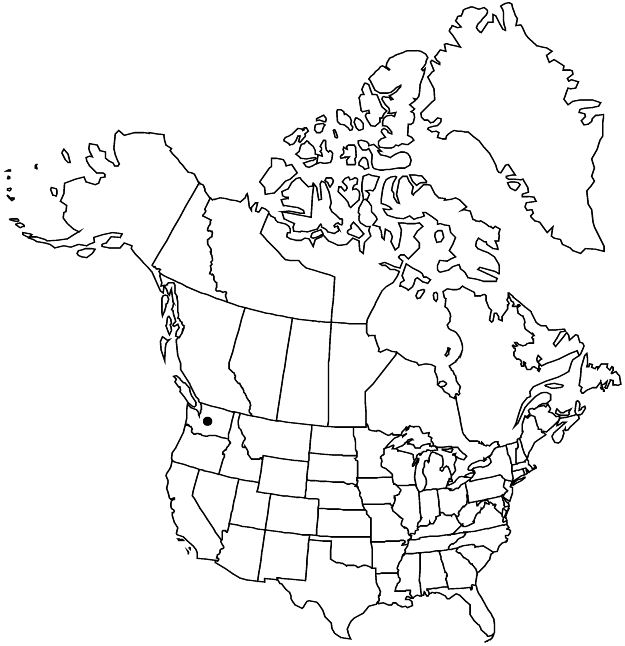Difference between revisions of "Cotoneaster tengyuehensis"
Watsonia 21: 338. 1997.
FNA>Volume Importer |
imported>Volume Importer |
||
| (3 intermediate revisions by 2 users not shown) | |||
| Line 28: | Line 28: | ||
|elevation=0–50 m | |elevation=0–50 m | ||
|distribution=Wash.;Asia (China);introduced also in Europe. | |distribution=Wash.;Asia (China);introduced also in Europe. | ||
| + | |introduced=true | ||
|discussion=<p>L. Lingdi and A. R. Brach (2003) confused <i>Cotoneaster tengyuehensis</i> with C. glomerulatus W. W. Smith, a species with small fruits 5 mm in diameter, with 5 pyrenes and styles, and slightly smaller leaves to 40–50 mm. In the flora area, <i>C. tengyuehensis</i> is more likely to be mistaken for <i>C. franchetii</i>, which is a true evergreen with orange-red, obovate to obconic fruits, and pink to purple stamens. Naturalized shrubs of <i>C. tengyuehensis</i> drop their foliage in midwinter.</p> | |discussion=<p>L. Lingdi and A. R. Brach (2003) confused <i>Cotoneaster tengyuehensis</i> with C. glomerulatus W. W. Smith, a species with small fruits 5 mm in diameter, with 5 pyrenes and styles, and slightly smaller leaves to 40–50 mm. In the flora area, <i>C. tengyuehensis</i> is more likely to be mistaken for <i>C. franchetii</i>, which is a true evergreen with orange-red, obovate to obconic fruits, and pink to purple stamens. Naturalized shrubs of <i>C. tengyuehensis</i> drop their foliage in midwinter.</p> | ||
|tables= | |tables= | ||
| Line 37: | Line 38: | ||
-->{{#Taxon: | -->{{#Taxon: | ||
name=Cotoneaster tengyuehensis | name=Cotoneaster tengyuehensis | ||
| − | |||
|authority=J. Fryer & B. Hylmö | |authority=J. Fryer & B. Hylmö | ||
|rank=species | |rank=species | ||
| Line 53: | Line 53: | ||
|publication year=1997 | |publication year=1997 | ||
|special status=Introduced | |special status=Introduced | ||
| − | |source xml=https:// | + | |source xml=https://bitbucket.org/aafc-mbb/fna-data-curation/src/2e0870ddd59836b60bcf96646a41e87ea5a5943a/coarse_grained_fna_xml/V9/V9_783.xml |
|subfamily=Rosaceae subfam. Amygdaloideae | |subfamily=Rosaceae subfam. Amygdaloideae | ||
|tribe=Rosaceae tribe Gillenieae | |tribe=Rosaceae tribe Gillenieae | ||
Latest revision as of 23:59, 5 November 2020
Shrubs, 2–2.5 m; crown ± rounded. Stems erect, arching, long; branches distichous, grayish maroon, initially densely strigose. Leaves deciduous (sometimes tardily so on vigorous shoots); petiole 1–4 mm, strigose; blade ovate or elliptic, (25–)30–50(–61) x 12–32 mm, chartaceous, base cuneate or rounded, margins flat, veins 3–5, deeply sunken, apex acuminate or acute, abaxial surfaces grayish green, villose-strigose or sparsely to moderately gray-tomentose, adaxial green to dark green, shiny, not glaucous, flat or faintly bulging between lateral veins, pilose-strigose; fall leaves yellow to orange. Inflorescences on fertile shoots 25–40 mm with (3 or)4 leaves, 3–7(–9)-flowered, compact. Pedicels 1–4 mm, densely strigose. Flowers erect or ascending, [5–]6–8 mm, opening small; hypanthium cupulate, strigose; sepals: margins villous, borders reddish brown, glabrous, apex acuminate or cuspidate, surfaces strigose; petals erect-incurved, pink to red, base dark pink or red, rarely dark red or maroon, margins white; stamens 20 or 21, filaments pink or pale pink, whitish distally, anthers white; styles (2 or)3–5. Pomes spreading or pendent, bright red, broadly obovoid or subglobose, rarely oblong-obovoid, 6.3–10.4 × 5.8–9.1 mm, shiny, not glaucous, sparsely strigose; sepals flat or suberect, strigose; navel closed; style remnants 2/3 from base. Pyrenes (2 or)3–5. 2n = 68 (Germany).
Phenology: Flowering May–Jun; fruiting Sep–Feb.
Habitat: Thickets, creek banks, open forests, edges
Elevation: 0–50 m
Distribution

Introduced; Wash., Asia (China), introduced also in Europe.
Discussion
L. Lingdi and A. R. Brach (2003) confused Cotoneaster tengyuehensis with C. glomerulatus W. W. Smith, a species with small fruits 5 mm in diameter, with 5 pyrenes and styles, and slightly smaller leaves to 40–50 mm. In the flora area, C. tengyuehensis is more likely to be mistaken for C. franchetii, which is a true evergreen with orange-red, obovate to obconic fruits, and pink to purple stamens. Naturalized shrubs of C. tengyuehensis drop their foliage in midwinter.
Selected References
None.